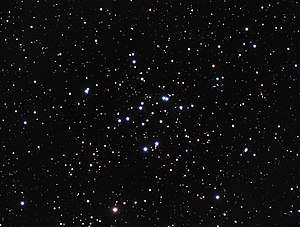M34 | NGC 1039 | Open Cluster | Perseus | 1,500 Light Years Away
Messier 34 is an open star cluster located in the constellation Perseus, discovered by the Italian astronomer Giovanni Battista Hodierna in the 17th century and later independently rediscovered and cataloged by Charles Messier in 1764. Positioned approximately 1,400 light-years away from Earth, this celestial assembly is part of the Milky Way galaxy. Messier 34 is a relatively young cluster, with an estimated age of around 180 million years, and it spans a region of about 14 light-years in diameter.
Comprised of over 400 stars, Messier 34 showcases a diverse range of colors, indicative of variations in temperature and composition among its stellar members. The stars within this open cluster are gravitationally bound, forming from the same interstellar cloud of gas and dust. Despite its relatively modest size and brightness, Messier 34 remains an attractive target for astronomers and stargazers due to its prominent appearance and the arrangement of its stars.
Observations of Messier 34 contribute to our understanding of open star clusters, providing insights into the dynamics of stellar systems and the processes involved in the formation and evolution of stars within our galaxy. The study of such stellar groupings helps astronomers unravel the complexities of star birth and the interactions between stars in shared cosmic environments. Messier 34, with its youthful stellar population and visually appealing arrangement, adds to the ongoing narrative of star birth and evolution within the intricate tapestry of the cosmos.

